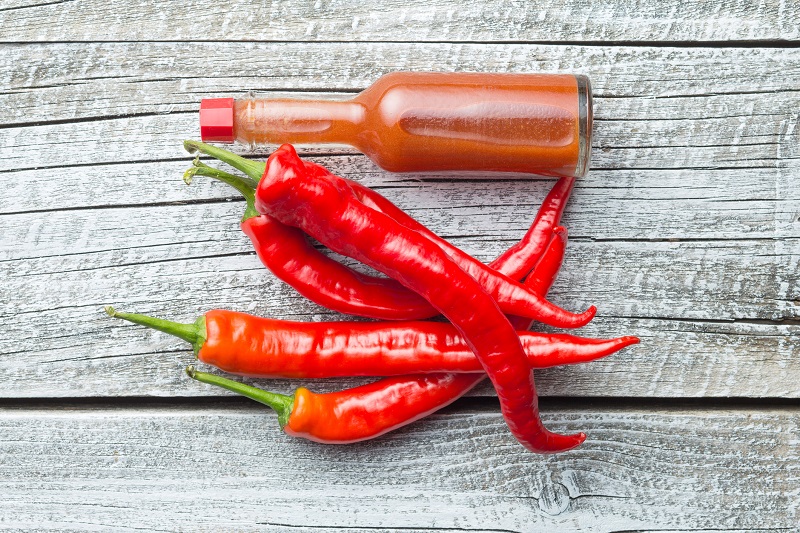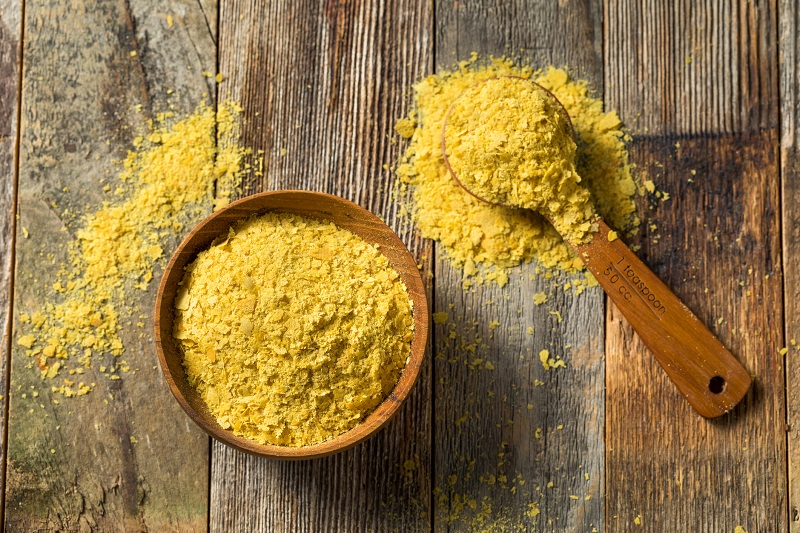You’re trying to eat healthy, but let’s face it: nobody enjoys a dry sandwich or a bland chicken breast. However, healthy eating doesn’t have to be boring. Choosing healthy condiments can help you reach your goals without compromising on flavor.
Still, some sauces and spreads can absolutely derail weight loss progress. Read on to learn which condiments are best for weight loss and which you want to limit to see results.
Condiments Definition
Condiments are all the sweet, tangy, spicy and savory extras we add to our meals to make them satisfyingly delicious. This includes dressings, sauces, spreads, dips, relish, spices, marinades and more.
Unfortunately, a dab here and a schmear there can add serious calories to your day. One tablespoon of mayonnaise, for instance, contains 94 calories. For reference, a tablespoon of food is about the size of the tip of your thumb.
However, the solution is not to swear off these add-ons. Studies show enjoying your food enhances satisfaction which may reduce overeating. Instead, look for healthy condiments that satisfy your tastebuds without adding excess calories.
But with so many options lining store shelves, how do you make the right choices? Don’t worry; we’ve got you covered.
Tips For Choosing Healthy Condiments

To find the best healthy condiments at the store, follow these tips:
- Look for options around 50 calories per tablespoon or less.
- Stick to choices that use whole food ingredients with minimal additives (like food dyes and high fructose corn syrup).
- Avoid condiments high in saturated fats and added sugars.
7 Best Healthy Condiments For Weight Loss
The main goal for condiments is to enhance flavor, but it’s great to find options that also boost health. Below is a list of healthy condiments that will help you stay on track while providing nutritional benefits.
1. Mustard

With only five to 10 calories per tablespoon, mustard tops the list of healthy condiments because it provides intense flavor for minimal calories. It’s also rich in antioxidants, which offer protective health benefits. Stick to yellow, whole grain and Dijon mustards since they don’t usually contain any extra ingredients.
Use these mustards as a marinade for meats, a spread on sandwiches, or a tangy addition to roasted chicken, pork and vegetables. Additionally, mustard is great with eggs. Try dipping hard-boiled eggs in mustard for a flavorful, high-protein snack.
2. Hot Sauce

Hot sauce adds a kick to your meals without piling on calories. With so many heat and flavor varieties available, you’re guaranteed to find one you enjoy. Plus, most hot sauces contain capsaicin, which may help reduce inflammation and aid in weight loss.
Use hot sauce to flavor eggs, taco meat and salads. You can also try combining it with shredded chicken as a healthier alternative to buffalo wings.
3. Salsa

A tablespoon of salsa contains about 10 calories. But that’s not all; salsa contains vitamin C and protective antioxidants. In fact, tomatoes are a rich source of lycopene which is a powerful antioxidant linked with cancer prevention.
Try swapping salsa for sour cream to top a baked potato. Salsa mixed with low-fat cottage cheese also makes a great high-protein dip. Additionally, a scoop of salsa can add flavor to salads in place of high-calorie salad dressings.
Looking for a flavorful and healthy meal idea? In a slow cooker, pour a jar of salsa over a pound of chicken and cook on low for six to eight hours. When finished cooking, shred the chicken and use it to stuff tacos or top salads.
4. Apple Cider Vinegar

Apple cider vinegar is a sweet and tangy vinegar linked to numerous health benefits, including weight loss and improved blood sugar control. More research is needed to understand these benefits, but scientists think the acetic acid in apple cider vinegar is responsible for these positive effects.
Use apple cider vinegar to make a healthy salad dressing or marinade; Simply combine olive oil with apple cider vinegar in a 3:1 ratio. Then try adding more flavors like garlic, lemon juice, salt, pepper and Dijon mustard. You can also use a splash of apple cider vinegar in soups or vegetable dishes to boost flavor without sodium.
5. Greek Yogurt

Plain, non-fat Greek yogurt is an excellent swap for high-fat creamy condiments like mayonnaise, sour cream and buttermilk. It offers the same tanginess plus a healthy dose of protein.
Substitute Greek yogurt for mayonnaise in deli salads or use it in place of sour cream when making dips. You can also use it as the base of marinades for tenderizing meats.
6. Sauerkraut

Sauerkraut is a low calorie, fermented cabbage condiment that adds tang and crunch to meals. It’s also packed with probiotics which are healthy microbes that support gut health.
Researchers continue to link gut health with numerous benefits, including aiding weight management. According to multiple studies, gut microbes may influence our hormones, blood sugar levels and how we store fat.
Add sauerkraut to sandwiches, hot dogs and sausages to boost flavor and promote digestive wellness. Or, just enjoy it as a flavorful side dish to any meal!
7. Nutritional Yeast

Nutritional yeast is a deactivated form of yeast sold as a yellow powder for flavoring food. It has a cheesy, savory flavor and is low in calories, making it an excellent substitute for high-calorie cheese toppings and sauces. Nutritional yeast is also a great source of protein and B vitamins, which help you convert food into energy.
Sprinkle nutritional yeast on eggs, popcorn, pasta and vegetables instead of cheese. We use it as a main ingredient in our Cashew Nacho Cheese Sauce recipe.
3 Condiments To Limit For Weight Loss
1. Mayonnaise
Mayonnaise is high in calories and unhealthy fats, which hinder weight loss. Substitute with healthier alternatives like mustard, Greek yogurt or avocado to improve your results.
2. BBQ Sauce
BBQ sauce is often high in added sugars and calories. As an alternative, use spices and herbs to create your own flavorful marinades and rubs.
For example, mix a teaspoon each of garlic powder, onion powder, paprika and salt for a tasty, calorie-free meat rub. Continue to experiment with your favorite seasonings.
3. Ranch Dressing
Ranch dressing is notorious for its high calorie and fat content. Instead, try making a healthier version using Greek yogurt as a base.
Start by blending a half-cup of non-fat Greek yogurt with one teaspoon of apple cider vinegar. Then add garlic powder, onion powder, salt and chives to taste. Finally, thin with water, as needed.
Conclusion
Choosing healthy condiments helps enhance the flavor of your meals while supporting your weight loss goals. Mustard, hot sauce, salsa, apple cider vinegar, Greek yogurt, sauerkraut and nutritional yeast are excellent, healthy condiments that provide flavor without sabotaging your progress. Limit high-calorie condiments like mayonnaise, BBQ sauce and ranch dressing.
Remember, enjoying your food is essential for long-term success. The Nutrisystem weight loss plan allows you to enjoy many flavorful condiments to help you make healthy and delicious meals while still seeing results. Explore the Nutrisystem Grocery Guide to learn more!
References
- Smith, J., Johnson, A., & Brown, R. (2015). The Effects of Nutritional Yeast on Flavor Enhancement in Food. Journal of Marketing Research, 52(6), 732-746. doi:10.1509/jmr.14.0299
- Frazie MD, Kim MJ, Ku KM. Health-Promoting Phytochemicals from 11 Mustard Cultivars at Baby Leaf and Mature Stages. Molecules. 2017;22(10):1749. doi:10.3390/molecules22101749
- Shang K, Amna T, Amina M, Al-Musayeib NM, Al-Deyab SS, Hwang I. Influence of Capsaicin on Inflammatory Cytokines Induced by Lipopolysaccharide in Myoblast Cells Under In vitro Environment. Pharmacogn Mag. 2017;13(Suppl 1):S26-S32. doi:10.4103/0973-1296.20398
- Zheng J, Zheng S, Feng Q, Zhang Q, Xiao X. Dietary capsaicin and its anti-obesity potency: from mechanism to clinical implications. Biosci Rep. 2017;37(3):BSR20170286. doi:10.1042/BSR20170286
- Saini RK, Rengasamy KRR, Mahomoodally FM, Keum YS. Protective effects of lycopene in cancer, cardiovascular, and neurodegenerative diseases: An update on epidemiological and mechanistic perspectives. Pharmacol Res. 2020;155:104730. doi:10.1016/j.phrs.2020.104730
- Budak NH, Aykin E, Seydim AC, Greene AK, Guzel-Seydim ZB. Functional properties of vinegar. J Food Sci. 2014;79(5):R757-R764. doi:10.1111/1750-3841.12434
- Rastelli M, Knauf C, Cani PD. Gut Microbes and Health: A Focus on the Mechanisms Linking Microbes, Obesity, and Related Disorders. Obesity. 2018;26(5):792-800. doi:10.1002/oby.22175
The post The 7 Best Healthy Condiments for Weight Loss (And The 3 Worst!) appeared first on The Leaf.
Comments
Post a Comment